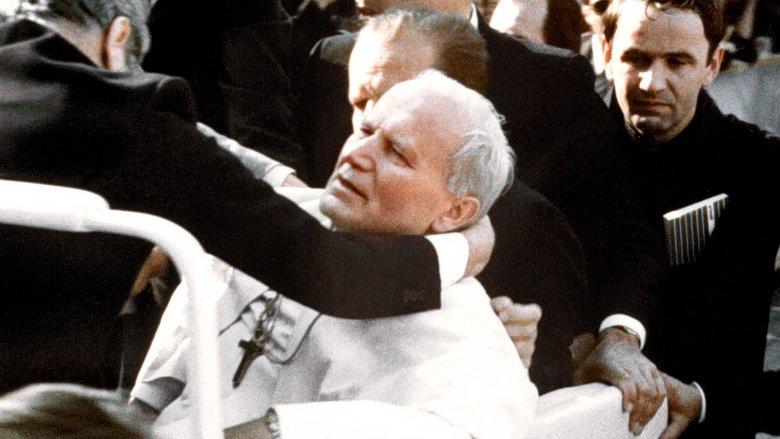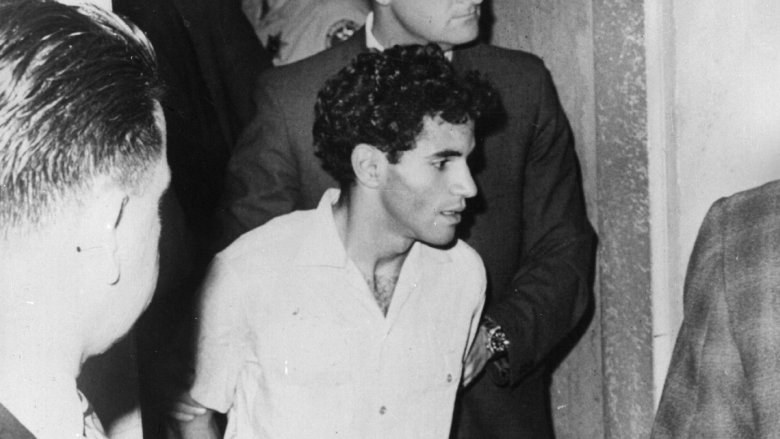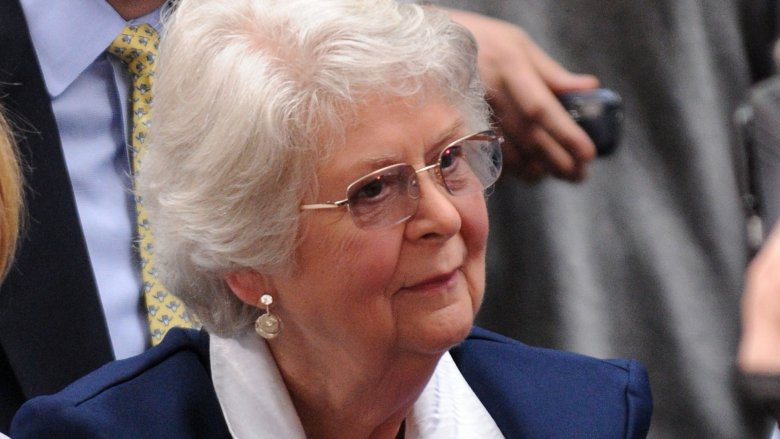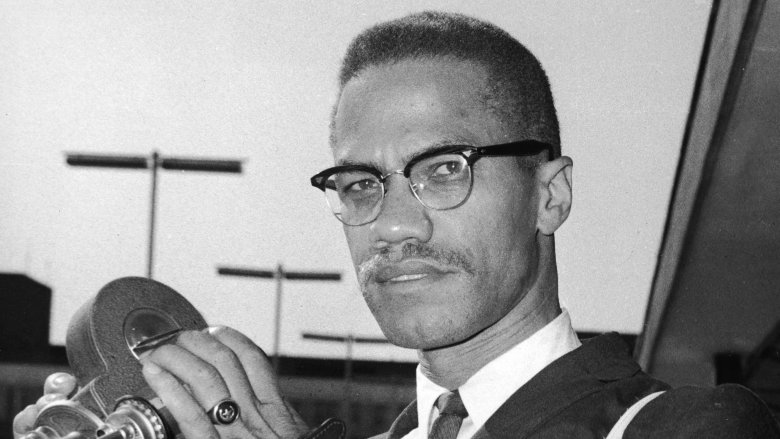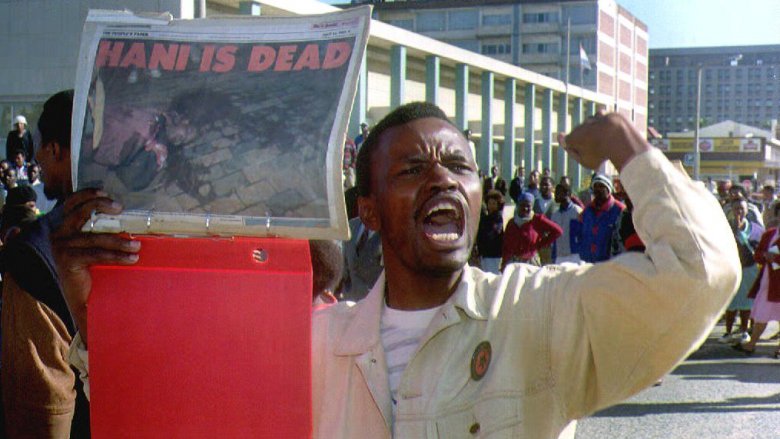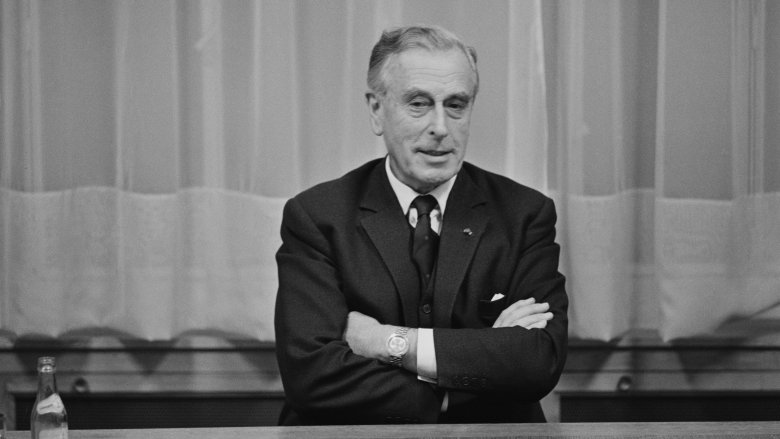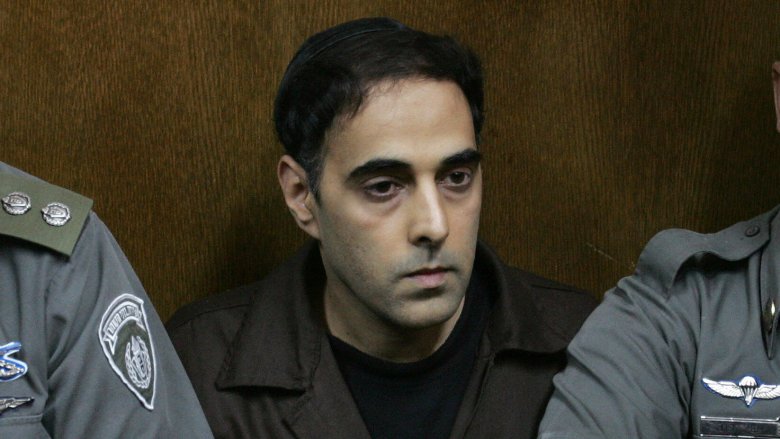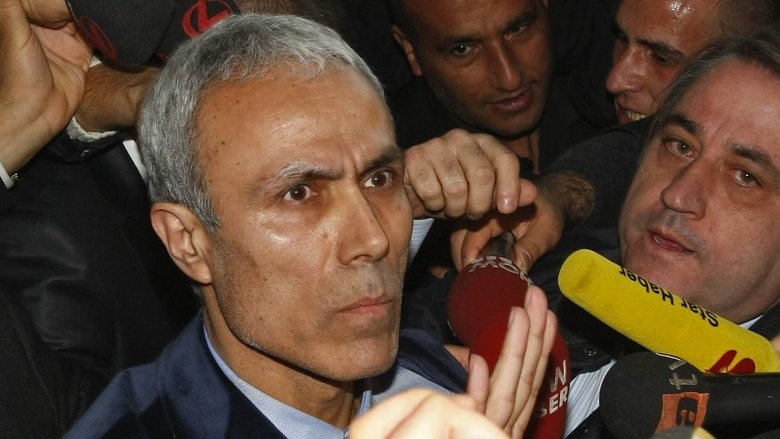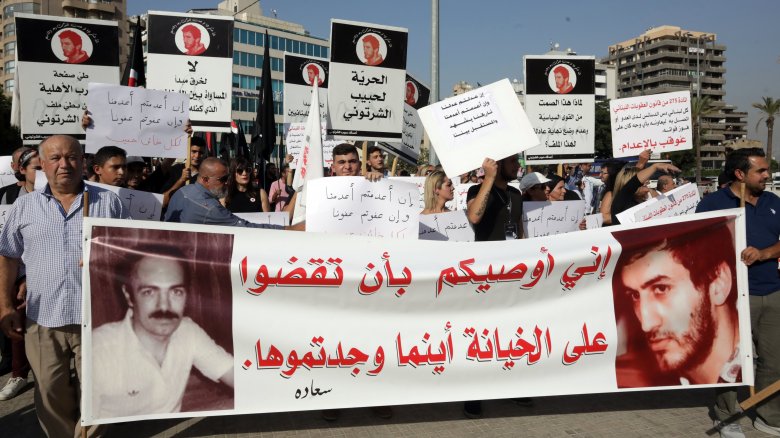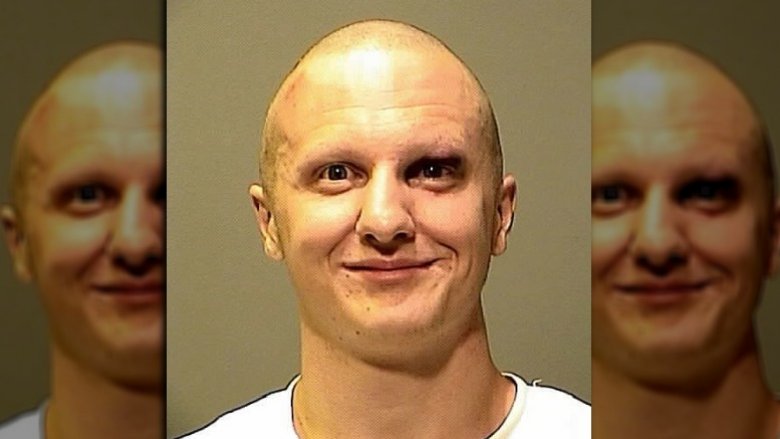Infamous Assassins Who Are Still Alive
Assassination takes plain old murder to another level, and not just because the word itself sounds so much more intriguing. Anyone can decide they want to be evil and kill someone else, but assassinations involve getting close enough to take out a world leader. Throw in the political motivation necessary to make it a proper assassination, and you have some seriously interesting, if morbid, crimes.
Because of all the people with guns guarding them, assassins usually don't live much longer than their illustrious targets. Others get the death penalty after a trial. But there are a surprising number of assassins and attempted assassins who are still alive and kicking. A whole lot of them have even gotten out of prison for various reasons, meaning you could be walking down the street next to someone who straight-up killed a world leader. Here are several assassins that are among us to this day.
Sirhan Sirhan
On June 5, 1968, Robert Kennedy was riding high. He was only 42, but according to History had already been a successful U.S. attorney general, senator, and had just won California's Democratic presidential primary. After giving his victory speech at a hotel in LA, he walked toward the kitchen to greet supporters. Then shots rang out. Kennedy was hit three times and died in a hospital the next day.
The assassin was Sirhan Bishara Sirhan, a 24-year-old Palestinian who had moved to the U.S. as a child. The Guardian says when he was immediately arrested he stated, "I did it for my country," (meaning Palestine) but that was the only reason Sirhan ever gave for killing RFK. Ever since that initial utterance, he's sworn he doesn't remember committing the murder.
In 1969, Sirhan was sentenced to death for the assassination. But in 1972, California temporarily abolished the death penalty and everyone on death row at the time had their punishments commuted to life in prison. This means the now-78-year-old is not only still alive as of 2022, but he has also been eligible for parole 16 times. While the first 15 times he was denied for not showing remorse (it's hard to be sorry for something that you insist you don't remember doing), in 2022, after two of RFK's children told the parole board they thought Sirhan should be released, it looked like he might be. Until, according to the LA Times, California governor Gavin Newsom reject the parole board's recommendation.
Sara Jane Moore
According to Biography, Sara Jane Moore was a seemingly mild-mannered bookkeeper. She grew up in West Virginia but as an adult ended up in the San Francisco Bay Area. Moore managed to get married and divorced seven times and had four kids. But somehow she also found the time to get involved in radical left-wing politics and become a paid informant for the FBI. By 1975, she had been radicalized enough to resort to attempted murder.
Moore waited with a gun for three hours outside the San Francisco hotel where President Gerald Ford was speaking on September 22. As he left and got into a waiting limousine, she shot at him, and CNN says the bullet missed his head "by inches." It was only 17 days after Squeaky Fromme, a follower of Charles Manson, had also tried to shoot the president. At Moore's sentencing, her intention became clear: "I finally understood and joined those who have only destruction and violence for a means of making change — and came to understand that violence can sometimes be constructive." Her aim in assassinating the president was to start a revolution.
She escaped prison for a few hours in 1979 and was finally paroled in 2007, aged 77. That year she told a local news station (via the San Francisco Chronicle) that she was "very glad" she didn't succeed in the assassination and that she was "wrong to try." Squeaky Fromme is also still alive and kicking as of 2022, and out on parole since 2009.
Thomas Hagan
Malcolm X (pictured) was a controversial figure, and CNN says he feared for his life. But he could have no idea when he stepped up to make a speech on February 21, 1965, that was about to be "slaughtered like a dog in front of his family," as one of his aides described it. Suddenly, shots rang out and Malcolm X's body was "riddled with bullets." He was 39.
The problems had started the year before, when Malcolm had broken with the Nation of Islam. He'd changed some of his more radical views and embraced orthodox Islam instead. This caused problems with the group's leadership. Thomas Hagan was a radical member of the Nation of Islam, and Malcolm X's statements pissed him off, so he came to the speech that day prepared to kill. After he assassinated the civil rights leader he tried to flee but was shot in the leg and beaten by the crowd before being arrested outside.
Hagan was tried along with two other men who were also convicted but always proclaimed their innocence. He was the only one to admit to his part in the assassination. Despite this, starting in 1992 he only served two days a week in jail and was fully paroled in 2010 after expressing "deep regret" for what he did. This resulted in outrage among some African-Americans and Muslims, who wondered if the murderer of an iconic white leader would have been shown such leniency.
Janusz Walus
The assassination of Chris Hani on April 10, 1993, came very close to throwing South Africa into a civil war. According to the International Business Times, Hani was head of both the South African Communist Party and the militant wing of the African National Congress Party, and on that day as he stepped out of his car he was shot and killed by Janusz Walus.
Walus was a Polish-born white South African and he did not like the fact that it looked like apartheid was about to end in the country. He thought that everything "built ... by whites with such difficulty" was being "destroyed in the name of a multiracial utopia that will never work." He wanted to incite a race war, and he thought assassinating Hani was the way to go about it.
Hani was unbelievably popular and seen as Nelson Mandela's eventual successor, so his murder sent shockwaves through South Africa. It looked like Walus might get what he wanted. Seventy people died in the resulting violence. Mandela went on TV and addressed the nation, calling the assassination a "watershed moment" and saying the "whole nation now teeters on the brink of disaster." He begged everyone, black and white, to stop killing people, and (thankfully) things calmed down.
Walus was sentenced to death, but this was commuted to life in prison. The 69-year-old is still locked up, after his application for parole was rejected for the fourth time in November 2020.
Thomas McMahon
Lord Louis Mountbatten (pictured) did all the things. He was a World War II hero, Admiral of the Fleet, and the 1st Earl Mountbatten of Burma, plus he had previously been both viceroy and governor-general of India and was the cousin of the queen of England. All this made him a perfect target for the Irish Republican Army. One of their operatives, Thomas McMahon, assassinated him using a bomb on August 27, 1979.
The earl had been hanging out on his boat in Ireland when there was a huge explosion. The BBC says his legs were severed, and he died quickly. According to the Telegraph, there were three other deaths, including two teenage boys, and three additional people were badly hurt but survived. It later emerged the IRA knew innocent children would be on board but decided to go ahead with the assassination anyway.
McMahon was an expert bomb maker and had built and planted the device before detonating it remotely. Oddly, he was already in police custody when the bomb went off, after being randomly stopped at a checkpoint. The IRA immediately claimed credit for the killings.
McMahon was sentenced to life in prison but was released in 1998 as part of the Good Friday peace agreement. These days he is a carpenter in Ireland and doesn't talk about what he did, but his wife has said he feels "genuine remorse."
Yigal Amir
The Oslo Accords, a major attempt to solve the problems between Israel and the Palestinians, were seen as a great step forward by most people. Not Yigal Amir, however. CNN says the Jewish law student was connected to right-wing groups and had been involved in anti-government activities. According to Haaretz, Amir decided after the first accord was signed in 1993 that it was a disaster and he needed to get Israel's prime minister Yitzhak Rabin "out of the way."
Amir conspired with two others to assassinate the politician. The group considered various methods, including "booby-trapping Rabin's car, putting nitroglycerin into the water supply of his apartment building, or shooting him at home." In 1995, Amir tried to kill the prime minister three different times, before finally succeeding on the fourth. On November 4, Rabin had just attended a rally in support of the second Oslo Accord and was walking toward his car when Amir opened fire. The prime minister was shot twice and died at the hospital 40 minutes later. Amir was immediately subdued by security forces.
Amir was tried and sentenced to life in prison, where he still is as of 2022. In fact, the law was changed to make sure he can't get out early for any reason. The Sydney Morning Herald says he met a female fan during a prison visit who supported him "morally and politically." They got married in 2004 and in 2006 he was caught trying to pass her a special, um, deposit he made so she could get artificially inseminated. They were eventually given conjugal visits and had a child the old-fashioned way.
Dawud Salahuddin
In 1980, relations between Iran and the U.S. were extremely tense. It was the middle of the hostage crisis and negotiations were not going well. Then on top of all that, an Iranian agent assassinated someone on American soil. According to NBC News, Ali Akbar Tabatabai had worked for the shah's government in the U.S. When the ruler was overthrown, Tabatabai stayed in Washington, D.C. where he was behind many articles railing against Ayatollah Khomenei and hosted counterrevolutionary meetings at his house. The new Iranian government wanted him taken out, but because of increased security couldn't get anyone into the country to kill him. They needed someone already there.
Daoud Salahuddin, formerly David Belfield, was raised in a Long Island Baptist family but converted to Islam in the late 1970s. He was openly against the shah, lived with an Iranian-American who was under FBI surveillance, and recruited others to his political and religious beliefs. Then on July 22, 1980, Salahuddin dressed as a mailman and rang Tabatabai's doorbell. When he came to the door, Salahuddin shot him three times. Tabatabai died 45 minutes later.
With the help of a thankful government, Salahuddin fled to Iran and received a hero's welcome. In 1995, he gave an interview in which he admitted to the assassination and called it an "act of war." He has "lived a varied life" since the killing, teaching English, fighting in Afghanistan, and even acting in one of Iran's most recognized films, "Kandahar." He'll probably never be punished for what he did.
Mehmet Ali Agca
On May 13, 1981, John Paul II was waving to the crowd in St. Peter's Square from an open car (pre-popemobile) when 23-year-old Turkish citizen Mehmet Ali Agca opened fire, hitting the pope four times. One bullet went through his abdomen with another barely missing his heart. He lost a ton of blood. The pontiff was rushed into surgery, which he only just survived. The would-be assassin was restrained by bystanders until the police came.
Agca has never officially said why he attempted the assassination, but he was known to have links to far-right paramilitary groups like the fascist Grey Wolves. While not proven, there are very legitimate theories that the KGB or its Bulgarian counterpart were behind the attempt on the pope's life. In 1981, John Paul II had only been pope for two and a half years, but he was already doing serious damage to the USSR's stranglehold on the Eastern Bloc. The BBC says the pontiff was openly "preaching a message that challenged Soviet communism's collectivist ideology" and they did not like it one bit.
Agca was sentenced to life in prison and was visited by the pope, who publicly forgave him. Despite his sentence, Agca was released after just 19 years. He was deported to Turkey where he served time for another unrelated murder. He got out again in 2010, and laid flowers on John Paul II's grave in 2014. He keeps asking to meet Pope Francis, but shockingly the Vatican isn't down for that.
Habib Shartouni
The Lebanese Civil War was a ridiculously complicated 15-year conflict and in 1982 they were right in the middle of it. Then Bashir Gemayel was elected president. He was from a famous Christian family and backed by Israel, while in conflict with the left, Muslims, and Palestinians. It was a crazy time, basically.
On September 14, 1982, the president-elect was addressing supporters at his political headquarters when a bomb went off. By the time the dust cleared, Gemayel and 26 other people were dead. It would be, according to Reuters, "a turning point" in the civil war. Gulf News says Habib Shartouni, a member of the Syrian Social National Party, was arrested two days later and readily confessed to the assassination. He said Gemayel was a "traitor" who was "selling the country to Israel." Shartouni had been given the bomb, then planted it in his sister's apartment, which just so happened to be above the targeted headquarters. On the day of the explosion he called and told his sister to get out, then detonated the device remotely.
The assassin spent eight years in prison without a trial before escaping in 1990. He lived in Syria for a while and may still be there, but no one is sure. The 63-year-old is very possibly still alive in 2022, because he gave an interview as recently as 2017, the same year a Lebanese court tried him in absentia for the crime and sentenced him to death. They'll have to catch him again first, though.
Jared Lee Loughner
While no one who goes around trying to assassinate politicians is completely compos mentis, Jared Lee Loughner probably has the best claim to not being responsible for his crime by reason of insanity. But the law decided he was sane enough to know what he did was wrong. On January 8, 2011, Rep. Gabrielle Giffords was holding a meeting to talk to constituents in a supermarket parking lot in Arizona when Loughner opened fire. Six people died, including a judge, and 14 were wounded. Giffords herself received extremely serious injuries but survived. According to Mother Jones, when a friend of Loughner's heard what happened, he knew he must be the killer.
Loughner was obsessed with Giffords. He had attended some of her rallies and felt she hadn't adequately answered his totally normal question, "What is government if words have no meaning?" He often referred to her as "fake" and would bring up anything she had done he thought was "stupid." The New York Times reported Loughner felt women in general "should not be allowed to hold positions of power." The would-be assassin had other bizarre views. He was a 9/11 truther (per the Atlantic), embraced the far-right hatred of the central banking system, was completely obsessed with dreams, and thought the government was enslaving people by using grammar. Loughner made YouTube videos to share his beliefs with the world. And then he decided that wasn't enough, so he killed people.
In 2012, Loughner pleaded guilty to avoid the death penalty and is serving a life sentence in a mental health prison.
